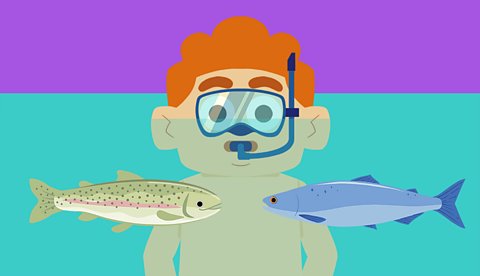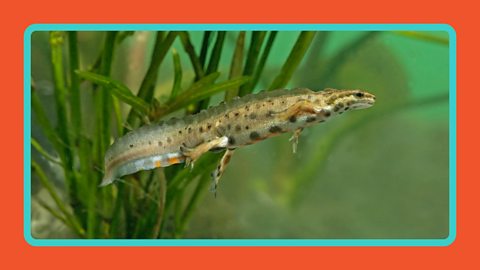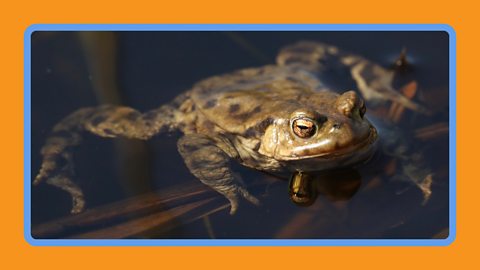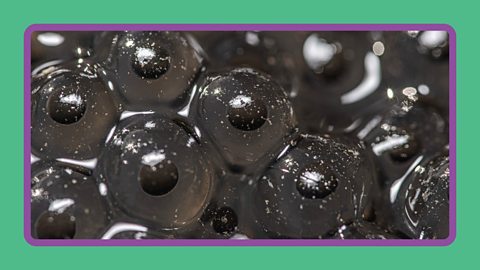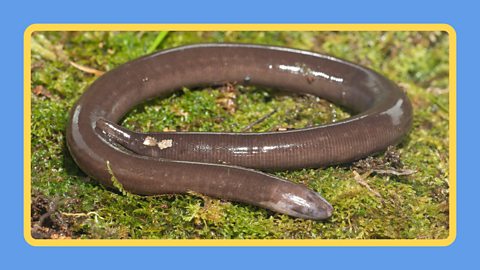
What are amphibians?
There are seven species of amphibian which live in the UK.
They are the common frog and pool frog, the common toad and natterjack toad, and the great crested newt, smooth newt and palmate newt.
You may be able to spot them hiding under plants in a pond or lake.

Vertebrates
Amphibians are one of the main five groups of vertebrates – animals that have a backbone inside their body.

Watch: What are amphibians?
Discover what makes an animal an amphibian with Aaron from One Zoo Three in the clip below.
Hi I’m Aaron and I love looking for the UK’s wonderful wildlife. Oh what’s that?
Frog noise
Oh it sounds like a frog and a frog is a type of amphibian.
Amphibians have smooth, moist skin without any hair.
They can have four legs or no legs at all.
You will often find amphibians in garden ponds and lakes where the water is still but they can also live on land too.
There are seven types of amphibian found here in the UK.
Amongst these is the common toad. It's slightly bigger than a frog but has shorter legs and prefers to crawl instead of hop.
In the summer, you might find smooth newts. They have big strong tails to help them swim.
But you would need to look hard to spot the UK’s largest newt because the great crested newt is also the rarest.
Amphibians lay eggs in water like this frogspawn. The wriggling tadpoles hatch with tails and gills to breathe underwater just like fish.
As they grow, they develop legs and lungs and begin to live on land breathing air like us.
This amazing change is called metamorphosis.
Amphibians play an important part in the food chain eating insects, snails and slugs.
Amphibians have moist skin, lay eggs, live underwater and live on land and but are also really noisy.
Hmm wonder if I can speak frog?
Ribbit gribbet!
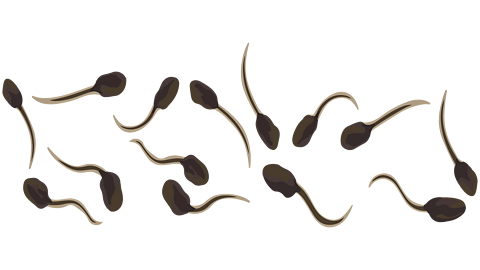
Amazing amphibian facts
- Amphibians hatch in water and breathe with gills.
- They then develop lungs so the adults can breathe air and spend time on land.
- Amphibians are cold-blooded animals.
- Amphibians are all vertebrates.
- Amphibians don't have hair.
- Amphibians go through a process known as metamorphosis, changing from an aquatic larval form with gills to an air-breathing adult form with lungs.

Watch – Amazing amphibians
Learn about the world's many different amphibians.
Some creatures begin their life in water. But as they get older, they change so they can live on land. These creatures are called amphibians.
Frogs are amphibians. In the spring, female frogs lay thousands of eggs in pools or streams. Little black dots in clear jelly balls called frog spawn. The black dots eat the jelly and grow. Soon they'll be tiny black tadpoles swimming in the water, breathing through gills on each side of the head. They're still growing and changing. Back legs grow first, then front legs. No need for their tadpole tails now. They soon drop off.
Now tiny frogs hop away from the pond. As they grow, they'll discover new things to eat, like slugs and insects. There's a special word for this amazing change. Metamorphosis. It happens to all amphibians.
Frogs that live in other countries sometimes look very unusual. Horned frogs are found in South America. They don't actually have horns, but they do have very wide mouths. Poison dart frogs are dangerous. They live in South America, too. And their bright colours warn other animals to stay away! They get their name because hunters in the Amazon rainforest dip their darts and arrows into frog poison to help them catch other animals.
Toads are bigger than frogs. Common toads and natterjack toads live in Britain, but they're not the biggest. In South America, cane toads can be almost fifteen centimetres long. Sometimes they're even called giant toads. They have dry bumpy skin with ridges over their eyes. Cane toads are good at finding food with their sense of smell. They eat all sorts of things - plants, small creatures, even birds. They're poisonous, so most animals can't eat them.
In the summer, Britain's garden ponds and damp ditches are good places to look for smooth newts. It's a very special thing to find a dark, bumpy great crested newt. They are quite rare and, like frogs, toads and newts, they're amphibians.
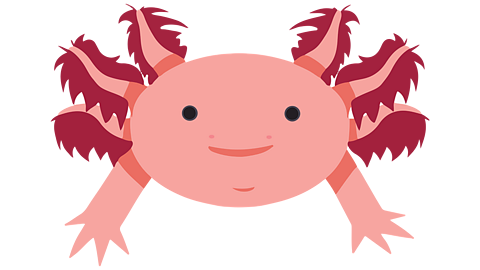
Did you know?
Axolotls are a species of amphibian native to Mexico but are now rare in the wild. They do not go through metamorphosis like other amphibians, and remain in their larval tadpole state as an adult.
This means that axolotls retain their gills and can spend much more time in the water than other amphibians.

Different types of amphibians
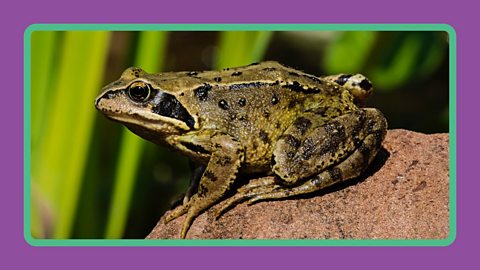
Image caption, Frog
Frogs are amphibians that live in freshwater ponds and lakes. Frogs have smooth skin, no tail, and strong, webbed feet that they use for jumping and swimming.
1 of 5
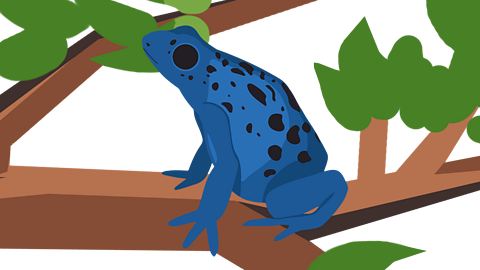
Did you know?
Tree frogs are a type of amphibian that have evolved to live in trees rather than in water. They normally only return to the ground to breed and lay eggs, although there are some species of tree frogs that spend all their life cycle in trees.
The Brazilian flea toad is the world's smallest vertebrate and measures just 7 millimetres in length!

Important words
Carnivores – Animals which eat meat. Most frogs are carnivores and eat insects and other invertebrates. Some very large frogs may even eat mammals and reptiles.
Cold-blooded – Animals which become colder or hotter depending on the temperature around them. All amphibians are cold-blooded.
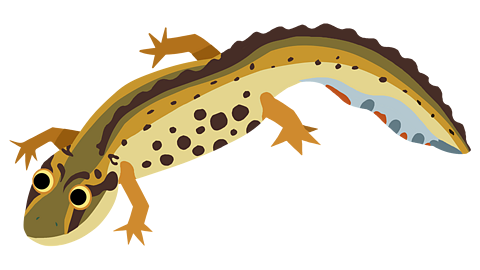
Frogspawn – The eggs of a frog. In the UK amphibians lay their eggs in fresh water. Other frogs lay their eggs lay on plants or in the ground, or in the case of tree frogs high up in a tree!
Gills – An organ, similar to our lungs, which allow amphibians to breathe underwater. When a tadpole becomes a fully grown frog they lose their gills.
Herbivores – Animals which eat plants. Nearly all amphibians eat meat. Sirens, which are a type of salamander eat algae, while there is a rare Brazilian treefrog which eats fruit!
Hibernation – Some animals are able to sleep through the winter to save energy. All British amphibians hibernate through the winter by hiding in a safe warm place, like an animal burrow or a compost heap.
Larvae – The young stage of an animal like an insect or an amphibian, after it hatches from an egg and before it becomes an adult. Tadpoles are the larval stage of a frog.
Lungs – Organs in the chest that are used it breathe air. They bring in oxygen and get rid of carbon dioxide. Some amphibians breathe through their skin!
Metamorphosis – The changes that some animals go through as they grow. The change from a tadpole to frog is an example of a metamorphosis.
Omnivores – Animals which eat plants and meat. While most frogs are carnivores, during their tadpole phase many are omnivores.

Activities
Activity 1 – Identifying amphibians
Activity 2 – Quiz
Activity 3 – Sort the amphibians
Easter Holidays Activity Pack activity
Check out some Easter inspired activities to complete in the Easter Holidays, for KS1.

More on Animals including humans
Find out more by working through a topic
- count3 of 12
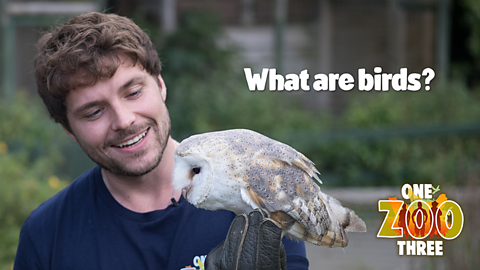
- count4 of 12
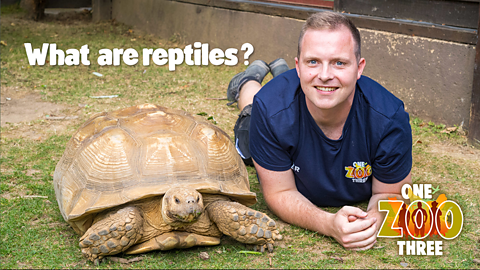
- count5 of 12
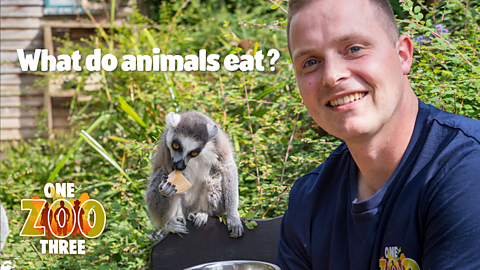
- count6 of 12
